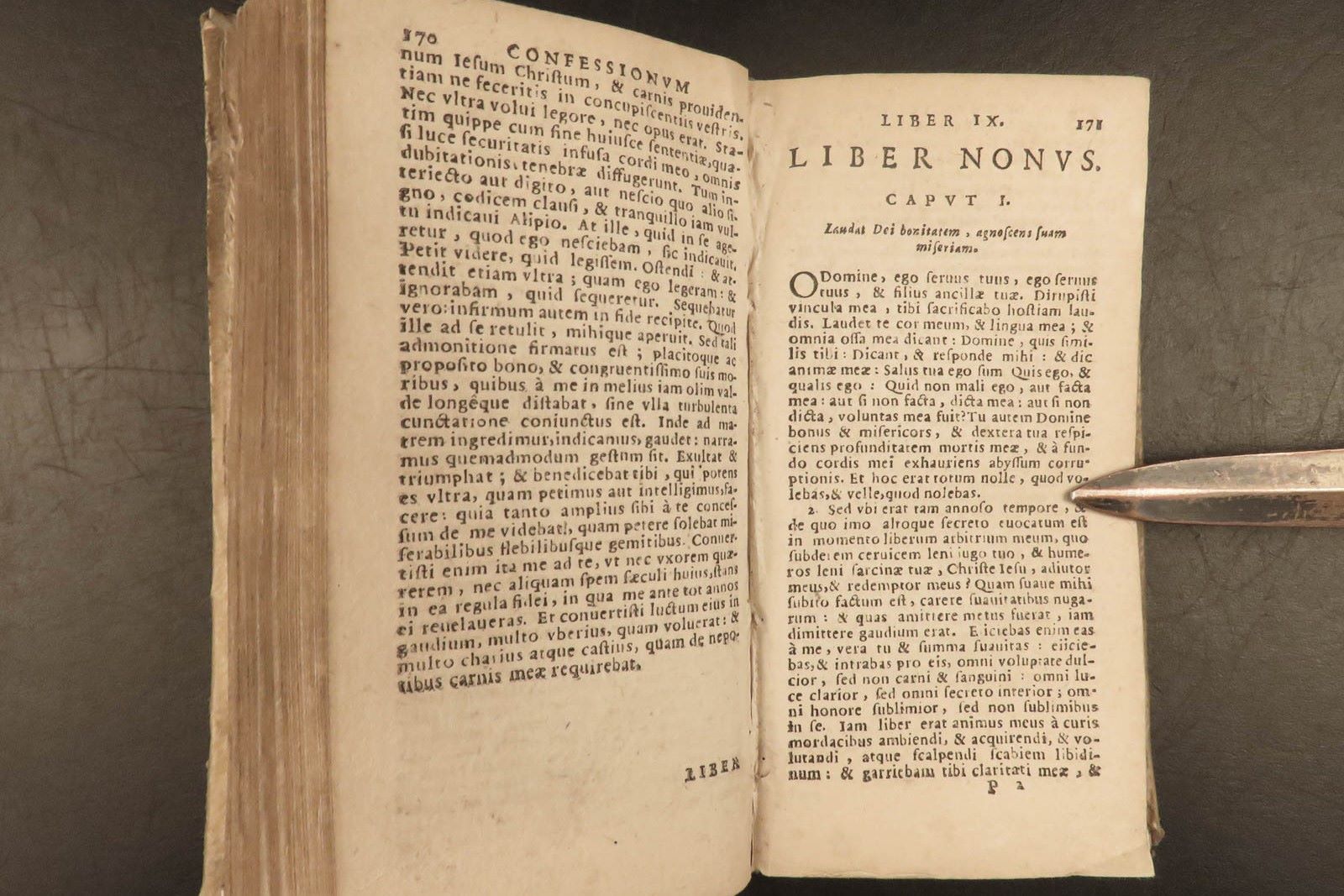Home>Theology and Spirituality>Who Are The Communion Of Saints


Theology and Spirituality
Who Are The Communion Of Saints
Published: February 25, 2024
Ericka Andersen, an editor at Christian.net, expertly merges digital strategy with content creation, focusing on faith and societal issues. Her communication skills enhance the platform's engaging narratives, fostering meaningful dialogue on belief's impact on society.
Discover the significance of the Communion of Saints in theology and spirituality. Explore the interconnectedness and support within this sacred community.
(Many of the links in this article redirect to a specific reviewed product. Your purchase of these products through affiliate links helps to generate commission for Christian.net, at no extra cost. Learn more)
Table of Contents
Introduction
The Communion of Saints is a profound and cherished concept within Christian theology, particularly in Catholicism. It encapsulates the interconnectedness and unity of all believers, both living and deceased, across time and space. This spiritual union forms a vital aspect of Christian faith, serving as a source of inspiration, comfort, and solidarity for millions of individuals worldwide.
The Communion of Saints is not merely an abstract theological idea; rather, it is a living reality that permeates the Christian journey. It encompasses the bond between the faithful on earth (the Church Militant), the souls undergoing purification in Purgatory (the Church Suffering), and the saints in heaven (the Church Triumphant). This interconnectedness reflects the timeless and universal nature of the Christian faith, transcending earthly limitations and embracing the eternal dimension of spiritual existence.
As we delve into the profound significance of the Communion of Saints, we will explore its biblical foundation, its role in Catholicism, and its broader importance in Christian faith. Additionally, we will address common misconceptions surrounding this concept, aiming to provide clarity and understanding. Through this exploration, we will gain a deeper appreciation for the rich tapestry of spiritual interconnectedness that defines the Communion of Saints.
Read more: Who Was Saint Augustine
The Definition of the Communion of Saints
The Communion of Saints refers to the spiritual bond and unity among all believers, encompassing the living, the deceased, and the heavenly saints. This profound concept emphasizes the interconnectedness of the entire body of Christ, transcending the constraints of time and space. It embodies the shared spiritual journey of the faithful, acknowledging the enduring influence of those who have gone before and the collective aspiration towards divine union.
At its core, the Communion of Saints reflects the belief that all baptized individuals are united in Christ, forming a mystical communion that extends beyond earthly existence. This communion is not limited by physical boundaries or temporal constraints but rather encompasses the eternal reality of the Christian faith. It acknowledges the ongoing relationship between the Church Militant (the living believers), the Church Suffering (the souls in Purgatory), and the Church Triumphant (the saints in heaven), illustrating the seamless continuity of the Christian journey.
The Communion of Saints is characterized by a profound sense of solidarity and mutual intercession. The living members of the Church are encouraged to pray for and support one another, recognizing the shared responsibility and interconnectedness within the body of Christ. Additionally, the communion extends to the saints in heaven, who are venerated as powerful intercessors and exemplars of faith. This spiritual interconnectedness fosters a sense of unity and continuity, affirming the enduring presence of the faithful across generations and the transformative power of collective prayer and supplication.
Furthermore, the Communion of Saints underscores the belief in the ongoing sanctification and purification of the faithful. It acknowledges the transformative journey towards holiness, encompassing both the earthly pilgrimage and the process of purification in Purgatory for those awaiting the fullness of divine union. This understanding emphasizes the enduring bond between the living and the deceased, as well as the shared pursuit of spiritual perfection within the mystical body of Christ.
In essence, the Communion of Saints encapsulates the profound interconnectedness, solidarity, and shared spiritual journey of all believers, transcending earthly limitations and embracing the eternal dimension of Christian faith. It serves as a source of inspiration, comfort, and hope, affirming the enduring unity of the body of Christ across time and eternity.
The Biblical Basis for the Communion of Saints
The biblical foundation for the Communion of Saints is rooted in the interconnected narrative of salvation history and the enduring bond of the Christian community. The concept finds its origins in various passages throughout the Old and New Testaments, reflecting the profound continuity and unity of God's people across generations.
In the New Testament, the apostle Paul's teachings emphasize the interconnectedness of the body of Christ, illustrating the spiritual unity and mutual dependence of believers. In his first letter to the Corinthians, Paul employs the metaphor of the body to elucidate the interdependence and unity of the Christian community, stating, "For just as the body is one and has many members, and all the members of the body, though many, are one body, so it is with Christ" (1 Corinthians 12:12). This imagery underscores the inseparable bond among believers, highlighting the collective identity and shared purpose within the body of Christ.
Furthermore, the biblical accounts of the transfiguration and the resurrection appearances of Jesus demonstrate the continuity of the communion between the living and the deceased. The presence of Moses and Elijah alongside Jesus during the transfiguration (Matthew 17:1-8) signifies the ongoing participation of the departed righteous in the divine plan of salvation. Similarly, the resurrection appearances affirm the enduring connection between Christ and his disciples, transcending the boundaries of mortality and affirming the transformative power of divine communion.
Moreover, the biblical exhortations to pray for one another and to bear one another's burdens reflect the interconnectedness and mutual intercession within the Christian community. The letter of James encourages believers to "pray for one another" (James 5:16), emphasizing the transformative impact of communal prayer and support. This injunction underscores the enduring responsibility and solidarity among the faithful, affirming the interconnected nature of the Christian journey.
In essence, the biblical basis for the Communion of Saints is deeply rooted in the interconnected narrative of salvation history, emphasizing the enduring bond and unity of God's people across time and eternity. The biblical passages underscore the interconnectedness, mutual intercession, and shared spiritual journey of all believers, affirming the timeless and universal nature of the communion within the body of Christ.
The Role of the Communion of Saints in Catholicism
The Communion of Saints holds a central and revered position within Catholic theology, serving as a cornerstone of spiritual devotion and communal solidarity. In Catholicism, the communion encompasses the interconnectedness of the entire body of Christ, uniting the faithful on earth, the souls undergoing purification, and the saints in heaven. This profound concept plays a multifaceted role in shaping the spiritual life and practices of Catholic believers, permeating various aspects of liturgy, devotion, and theological reflection.
One of the pivotal roles of the Communion of Saints in Catholicism is the veneration and invocation of the saints as powerful intercessors. The saints, revered for their exemplary lives of faith and virtue, are regarded as heavenly advocates who can intercede on behalf of the faithful. Catholics often seek the intercession of specific saints, believing in their ability to pray for and aid those in need. This practice reflects the enduring belief in the communion between the living and the deceased, fostering a sense of spiritual solidarity and divine assistance within the Christian community.
Additionally, the Communion of Saints is intricately woven into the fabric of Catholic liturgical celebrations and devotional practices. The feasts of the saints, commemorated throughout the liturgical year, serve as occasions for spiritual reflection, inspiration, and communal rejoicing. These celebrations highlight the enduring impact of the saints' lives and their continued presence within the communion of believers. Moreover, devotional practices such as the recitation of the Litany of the Saints and the veneration of relics underscore the tangible expression of the communion, affirming the enduring bond between the living and the heavenly hosts.
Furthermore, the Communion of Saints plays a vital role in fostering a sense of spiritual solidarity and communal identity within the Catholic faith. The recognition of the interconnectedness among the faithful, the souls in Purgatory, and the saints in heaven underscores the enduring unity of the mystical body of Christ. This awareness cultivates a profound sense of belonging and shared responsibility, emphasizing the collective journey towards holiness and divine union.
In essence, the Communion of Saints holds a multifaceted role in Catholicism, permeating the spiritual life, devotional practices, and communal identity of believers. It serves as a source of inspiration, intercession, and communal solidarity, affirming the enduring bond and interconnectedness within the body of Christ.
The Importance of the Communion of Saints in Christian Faith
The Communion of Saints holds profound significance in Christian faith, serving as a source of inspiration, comfort, and spiritual solidarity for believers across denominations. This interconnectedness among the living, the deceased, and the heavenly saints embodies the timeless and universal nature of the Christian journey, emphasizing the enduring bond and shared responsibility within the body of Christ.
One of the paramount aspects of the Communion of Saints is its role in fostering a sense of spiritual continuity and interconnectedness. This concept affirms the enduring unity of the entire body of Christ, transcending temporal and spatial limitations. It underscores the belief in the ongoing communion between the living believers, the souls undergoing purification, and the saints in heaven, reflecting the seamless continuity of the Christian pilgrimage. This interconnectedness serves as a source of comfort and assurance, reminding believers of the enduring presence and support within the larger community of faith.
Moreover, the Communion of Saints embodies the belief in the transformative power of collective prayer and intercession. The interconnectedness among believers fosters a sense of solidarity and mutual support, encouraging the practice of praying for one another and seeking the intercession of the saints. This communal aspect of prayer underscores the shared responsibility and care within the body of Christ, affirming the belief in the efficacy of intercessory supplication and the spiritual communion that transcends earthly boundaries.
Furthermore, the Communion of Saints serves as a source of inspiration and emulation for believers. The lives of the saints, characterized by unwavering faith, virtue, and selfless devotion, offer profound examples of Christian discipleship. Their enduring influence and intercessory role inspire believers to strive for holiness and to emulate their steadfast commitment to the gospel. The communion with the saints provides a tangible connection to the rich tradition of faith, offering guidance, encouragement, and exemplars of spiritual fortitude for the contemporary Christian journey.
In essence, the Communion of Saints holds immense importance in Christian faith, embodying the enduring interconnectedness, spiritual solidarity, and transformative power of communal prayer and intercession. This concept serves as a source of inspiration, comfort, and guidance, affirming the enduring unity and shared spiritual journey within the body of Christ.
Read more: What Is Communion Of Saints
Misconceptions about the Communion of Saints
Misconceptions about the Communion of Saints often stem from misunderstandings or misinterpretations of the concept within Christian theology. These misconceptions can lead to confusion and apprehension among believers, hindering a deeper appreciation of the profound interconnectedness and spiritual solidarity embodied by the Communion of Saints. By addressing these misconceptions, a clearer understanding of this fundamental aspect of Christian faith can be attained.
One common misconception is the belief that the veneration of saints in the Communion of Saints detracts from the worship of God. However, the veneration of saints does not diminish the centrality of God in Christian worship; rather, it serves as a means of honoring those who have exemplified extraordinary faith and virtue. The veneration of saints is rooted in the recognition of their sanctity and their role as powerful intercessors, not as objects of worship. This distinction is crucial in understanding the Communion of Saints as a reflection of the enduring bond among believers and the heavenly hosts, rather than a form of idolatry.
Another misconception relates to the perceived mediation of the saints conflicting with the sole mediation of Christ. The Communion of Saints does not detract from the unique mediation of Christ; rather, it affirms the interconnectedness of the entire body of Christ, emphasizing the shared spiritual journey and mutual intercession among believers. The saints, as members of the mystical body of Christ, participate in the divine communion through their intercessory role, amplifying the collective supplication of the faithful. This understanding underscores the harmonious relationship between the mediation of Christ and the intercessory role of the saints within the communion of believers.
Furthermore, there is a misconception that the Communion of Saints is exclusive to Catholicism and does not hold relevance in other Christian traditions. However, the interconnectedness and spiritual solidarity embodied by the Communion of Saints transcend denominational boundaries, resonating with the broader Christian faith. While the expression of the communion may vary across traditions, the fundamental belief in the enduring bond among the living, the deceased, and the heavenly saints remains a unifying aspect of Christian spirituality. This misconception highlights the universal nature of the Communion of Saints, transcending denominational distinctions and affirming its relevance within the broader Christian narrative.
In essence, addressing these misconceptions fosters a deeper understanding of the profound interconnectedness and spiritual solidarity embodied by the Communion of Saints. By dispelling misunderstandings and clarifying the theological nuances of this concept, believers can embrace the enduring unity and transformative power of the communion within the body of Christ.
Conclusion
The Communion of Saints stands as a testament to the enduring interconnectedness, spiritual solidarity, and transformative power within the Christian faith. This profound concept, rooted in biblical teachings and cherished within Catholic theology, embodies the timeless and universal nature of the Christian journey. It transcends earthly limitations, encompassing the living, the deceased, and the heavenly saints in a seamless communion that reflects the enduring unity of the body of Christ.
The significance of the Communion of Saints extends beyond theological discourse, permeating the spiritual life and practices of believers across denominations. It serves as a source of inspiration, comfort, and guidance, affirming the enduring bond and shared responsibility within the larger community of faith. The interconnectedness among believers fosters a profound sense of belonging and solidarity, emphasizing the collective journey towards holiness and divine union.
Furthermore, the Communion of Saints underscores the transformative power of collective prayer and intercession, affirming the belief in the efficacy of communal supplication and the enduring influence of the saints as powerful intercessors. The lives of the saints, characterized by unwavering faith and virtue, offer profound examples of Christian discipleship, inspiring believers to emulate their steadfast commitment to the gospel.
Addressing misconceptions about the Communion of Saints is crucial in fostering a deeper understanding of this fundamental aspect of Christian faith. By dispelling misunderstandings and clarifying the theological nuances of this concept, believers can embrace the enduring unity and transformative power of the communion within the body of Christ. The Communion of Saints transcends denominational boundaries, resonating with the broader Christian faith and affirming its relevance within the universal narrative of salvation history.
In conclusion, the Communion of Saints stands as a testament to the enduring interconnectedness, spiritual solidarity, and transformative power within the Christian faith. It serves as a source of inspiration, comfort, and guidance, affirming the enduring unity and shared spiritual journey within the body of Christ. Embracing this profound concept enriches the spiritual lives of believers and fosters a deeper appreciation of the enduring communion that transcends time and eternity.














